Orientation activities serve as a bridge between home and school, helping young learners acclimate to their new surroundings and routines.
From icebreaker games to exploration stations, each activity is designed to promote social interaction, develop essential skills, and ignite a love for learning in our little ones.
Here’s a list of the amazing orientation activities for preschoolers that are sure to set the stage for a successful start to their preschool journey.
“All About Me” Collage:

The “All About Me” collage activity provides an excellent opportunity for preschoolers to share their unique qualities, interests, and preferences. Provide each child with a poster board or a large piece of construction paper, along with magazines, markers, scissors, and glue. Instruct them to cut out pictures or words that represent themselves and their favorite things, and then create a collage on their board.
Storytime Circle:

Stories have the power to captivate young minds and spark their imagination. The Storytime Circle activity sets the stage for meaningful connections between preschoolers and their teachers or classmates. Gather the children in a circle and choose engaging picture books that introduce friendship, sharing, or other important values. Read the story aloud, encouraging participation by asking questions and inviting the children to share their thoughts.
Sensory Exploration Stations:

Preschoolers learn through their senses, and sensory exploration stations provide an immersive and hands-on experience for them to discover and investigate the world around them. Set up different stations, such as a sensory bin filled with rice or sand, a water table with floating objects, a playdough station, or a tactile wall with different textures.
Name Recognition Game:

Developing name recognition is an essential early literacy skill for preschoolers. Create a fun and interactive game to help children become familiar with their names and the names of their peers. Prepare name cards for each child and place them on a table or the floor. Call out a name, and the child whose name is called can pick up their card and bring it to the designated spot.
Nature Scavenger Hunt:

Connecting with nature and the outdoors is not only enjoyable but also provides numerous learning opportunities for preschoolers. Organize a nature scavenger hunt where children can explore their surroundings and search for specific items, such as leaves, rocks, flowers, or insects. Provide them with a checklist or pictures to help identify the items.
Friendship Bracelet Exchange:
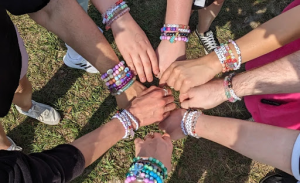
Friendship and social connections are crucial aspects of a preschooler’s experience. Organize a friendship bracelet exchange activity where each child creates a bracelet for another classmate. Provide colorful beads, strings, and instructions for making simple bracelets.
Musical Freeze Dance:

Get the preschoolers moving and grooving with a lively game of musical freeze dance. Play upbeat music and have the children dance freely. When the music stops, they must freeze in whatever pose they are in. Encourage them to strike funny or creative poses. Start the music again, and the dancing resumes.
Color Sorting Bonanza:

Colors are an essential concept for preschoolers to learn, and the color-sorting bonanza activity makes it both educational and entertaining. Set up several baskets or containers and fill them with an assortment of objects in different colors.
Community Helpers Dress-Up:

Introduce preschoolers to various community helpers and their roles through a dress-up activity. Set up a dress-up corner with costumes representing different professions, such as doctors, firefighters, teachers, police officers, and chefs.
Name Puzzle Games:

Boost name recognition and problem-solving skills with name puzzle games. Create individual name puzzles by writing each child’s name on a large piece of cardboard or foam board and cutting it into separate pieces. Mix up the puzzle pieces and challenge the children to put their names back together.
Sensory Storytelling:
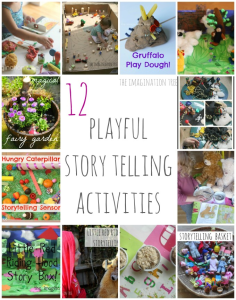
Combine sensory exploration and storytelling with this immersive activity. Choose a well-loved storybook and create sensory experiences that correspond to different parts of the story. For example, if the story takes place in a forest, set up a sensory station with pinecones, leaves, and a nature-scented sensory bin.
Shape Hunt:

Develop shape recognition skills through an exciting shape hunt activity. Create a list of different shapes, such as circles, squares, triangles, and rectangles. Take the children on a scavenger hunt around the classroom or outdoor space to find objects that match each shape.
Rainbow Art:

Let creativity shine with a vibrant rainbow art activity. Provide each child with a blank white canvas or a large piece of paper. Set up an array of colorful art supplies, such as paint, crayons, markers, or colored pencils. Display their artwork prominently in the classroom, celebrating their creativity and fostering a sense of pride.
Animal Charades:
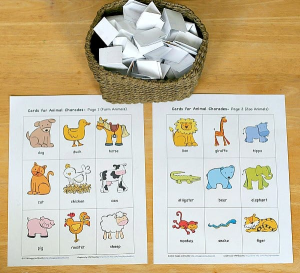
Ignite imagination and physical movement with a game of animal charades. Write down the names of various animals on slips of paper and place them in a container. Have the children take turns picking a slip and acting out the animal without speaking. The other children can guess the animal being portrayed.
Science Exploration:
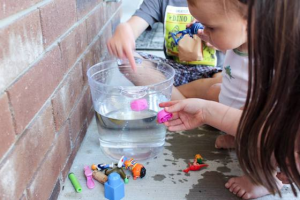
Sink or Float: Introduce basic scientific concepts with a sink or float experiment. Set up a water table or a basin filled with water and gather various objects of different materials, such as plastic, metal, wood, or foam. Invite the children to predict whether each object will sink or float and then test their hypotheses by placing the objects in the water one by one.
Puppet Show:

Bring storytelling to life with a puppet show activity. Set up a puppet theater using a large box or curtain. Provide a variety of puppets or simple sock puppets for the children to use. Encourage them to work together to create a story or act out a favorite book.
Nature Walk and Leaf Rubbings:
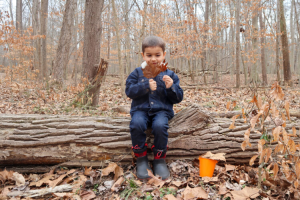
Take the preschoolers on a nature walk around the school or a nearby park. Encourage them to observe and collect fallen leaves of different shapes and sizes. Once back in the classroom, provide crayons and white paper. Instruct the children to place a leaf under the paper and gently rub the crayon over it, revealing the leaf’s texture and shape.
Building Blocks Challenge:

Provide a variety of building blocks, such as wooden blocks, Lego bricks, or foam blocks. Set a timer and challenge the children to work together to build the tallest tower or create a specific structure within a given time frame.
Scavenger Hunt:

Organize a themed scavenger hunt to introduce preschoolers to different areas of the school or classroom. Create a list of items or pictures that the children need to find and check off. For example, they might search for a book, a pencil, a specific color object, or a particular shape.
Alphabet Hopscotch:

Combine physical activity and letter recognition with an alphabet hopscotch game. Create a hopscotch grid on the floor using tape or chalk, but instead of numbers, write letters of the alphabet in each square. Call out a letter, and the child must hop on that letter to progress through the hopscotch.
